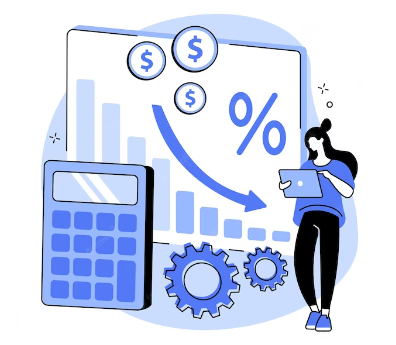

Discover the five critical mistakes that collection agencies in Kuwait must avoid to strengthen thei...

An insightful overview of how AI is transforming debt follow-up systems to help UAE agencies achieve...

This blog provides a beginner-friendly guide to debt follow-up systems, helping debt collectors and ...

Starting from the latter half of 1990s, the telecommunications industry underwent explosive growth due to newly emerging technologies and widespread deregulation. So naturally, during this period, the telecom industry focused almost completely on growing and retaining their consumer base, leading most large telecom companies to simply write off their debts. However, by the advent of the 2000s, increased competition and recession caused massive landslide like decline in this industry, because of which many companies couldn’t afford to improve their debt collections infrastructure. Added to this was the fact that, when compared to sales and marketing, investing in collections has generally always been on the back burner for many organizations. So, today, many telecoms are completely unprepared when facing the challenges of the pandemic.
Although the causes of telecom debt are still evolving even as we write this, most of the debt can be attributed to a few main reasons:
Changing Economic Circumstances
For many consumers, unfortunately, the pandemic has vastly degraded their economic circumstances due to job loss. And this has the potential to escalate even more as the pandemic continues to impact the economy and cause further recession.
Switching Companies
As mentioned above, during the high-competition years of the 90s, the telecom industry created a buyers’ market, with many carriers coming up with incentives to steal customers from one another. These incentives took the form of cut-rate plans, and some even paid off any early termination fees from the former carrier. Because of this, it has become quite common for consumers to change carriers without paying off the outstanding debt owed to a previous provider.
Surprise Bills
For many consumers, their outstanding debt is due to the higher bills they receive for overextending their service. Most, if not all, telecom contracts come with fine print that most users just purely neglect to read through and understand. A contract violation can sometimes result in bill amounts jumping by hundreds for an unsuspecting customer. Whether the decision not to pay is a moral objection due to feeling of being wronged, or simply the inability to pay a high amount they are unprepared for, either way, the bill stays unpaid. And anyway, due to the pandemic situation, many consumers are determined to stay in touch now, and decide to worry about the costs later.
Transient Nature of Wireless Services
Unlike landlines that are attached to the wall of a permanent residence, the very nature and appeal of mobile phones is that they allow their users freedom to roam. However, this ability to move from one physical address to another is how many consumers simply and innocently lose track of some of their bills. And then there are the other, dishonest consumers who use ever changing addresses to cover their tracks for trails of debt.
As it stands today the challenges and deepening recession trends present unique challenges for telecoms as they try to recover debt:
Threatening to terminate services is no longer an option
As mentioned above, changing companies is one of the most common causes of debt for telecom companies. But the same factor is also one of the reasons that companies cannot “play hard” during their recovery attempts. The main reason here is that the threat of turning off a customer’s service no longer carries any weight, as they will simply switch to another service provider. Also, given today’s climate of extending compassion to those who have faced/are still facing financial difficulties due to the pandemic, threats to cut off service at this time can be perceived as unsympathetic, and damage your company’s reputation.
Difficulties in locating customers
The fact that mobile phones allow their users complete freedom of movement from one address to another, it also automatically means that your company is always trying to keep up with changes of address. For other telecom services like cable TV for instance, most consumers change their residence as well as their service provider at the same time. Either way, a telecom company spends a significant amount of time and resources trying to track down payment. This trend will also continue to escalate as more and more consumers are forced to relocate due to the pandemic.
Restrictions on the Debt Collection Process
Apart from the above factors, there are legislations and regulatory pressures that are designed to apply restrictions on the debt collections process. These regulations limit the use of artificial or prerecorded voice messages, automatic dialing systems, and SMS text messages. In most jurisdictions now, it’s also required that all automated IVR calls for telemarketing or informational purposes made to a wireless phone MUST have the consumer’s express consent.
Looking at the above reasons, it may appear that collecting telecom debt is a difficult and cumbersome (even hopeless!) process. To be honest, it can be, but with the right approach, companies do, and can recover their debts, while still retaining customers. How? See below…
▪ Training and compliance
Personnel collecting debt should be trained and certified to do so. They must be familiar with laws and regulations surrounding consumer data security as well as debt collection practices.
▪ Immediate response
Time is of the essence when collecting debt. Companies should do the following, as quickly as possible:
✓ Ascertain if the debtor is deceased or bankrupt
✓ Attempt to locate consumers with expired contact information
✓ Work with vendors to attain the most recently reported address and credit scores
✓ Immediately generate and mail Demand Letters
✓ Client Segmentation
From the above article, it is amply clear that the telecom industry today is faced with the perpetual challenges of very high volumes of low-value consumer debt. As a starting step for resolution, companies can optimize their valuable time and resources by segmenting consumer portfolios based on the validity of contact information or credit scores.
Which is the best debt collection software in India, Oman, Qatar?
The benefits of the best debt collection software like smart debt collection provides a streamlined and automated approach to the debt recovery process, optimizing efficiency and reducing the workload on collection teams. With features like automated reminders, payment scheduling, and integrated communication tools, it enhances the chances of successful debt recovery while maintaining compliance with legal regulations. The software often includes robust reporting and analytics capabilities, offering valuable insights into the debt portfolio and performance metrics. This not only facilitates data-driven decision-making but also helps organizations tailor their collection strategies for better results. Ultimately, the best debt collection software proves to be a valuable asset for improving cash flow, minimizing losses, and maintaining a more organized and effective debt recovery operation.
Best debt collection software in India
Best debt collection software in Oman
Best debt collection software in Qatar
If you need free demo on best debt collection softwrae, please fill the form below